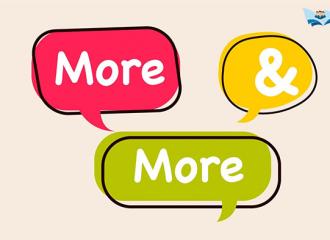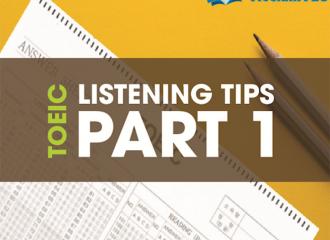MỤC LỤC
Câu trực tiếp là câu diễn tả lại nguyên văn lời của người nói, câu trực tiếp thường được trích dẫn trong dấu ngoặc kép.
Ví dụ:
Lan said: “I will go to Ha Noi tomorrow”. (Lan nói: “Cô ấy sẽ đi Hà Nội vào sáng mai)
Cấu trúc của câu trực tiếp như sau:
Mệnh đề tường thuật + “mệnh đề được tường thuật”
Ví dụ:
He said: “He will finish this report tomorrow” (Anh ấy nói: “Anh ấy sẽ hoàn thành báo cáo vào sáng mai)
=> Trong đó “he said” là mệnh đề tường thuật, còn “he will finish this report tomorrow” là mệnh đề được tường thuật.
.jpg)
Câu gián tiếp là câu diễn tả lại lời của người nói, khi diễn tả lại cần có sự thay đổi trong từ ngữ tuy nhiên vẫn phải đảm bảo giữ nguyên được nghĩa ban đầu.
Ví dụ:
Lan said she would go to Ha Noi the next day. (Lan nói cô ấy sẽ đi Hà Nội vào ngày sau đó)
Cấu trúc câu gián tiếp thường được viết như sau:
Mệnh đề tường thuật + (that)+mệnh đề được tường thuật.
Ví dụ:
He said that he would finish this report the next day. (Anh ấy nói rằng anh ấy sẽ hoàn thành bài báo cáo vào ngày sau đó)
Hiểu được câu trực tiếp, câu gián tiếp như thế nào vẫn chưa đủ, các bạn cần nắm rõ cách chuyển đổi từ câu trực tiếp sang câu gián tiếp thì mới có thể tự tin hoàn thành hết các bài tập được.
Ví dụ cách chuyển đổi câu trực tiếp sang câu gián tiếp:
Câu trực tiếp: Mai said: “I will go to Thailand tomorrow”.
Câu gián tiếp: Mai said she would go to Thailand the next day.
.jpg)
Một số quy tắc khi chuyển đổi từ câu trực tiếp sang câu gián tiếp như sau:
Đổi ngôi, đổi tân ngữ
Lùi thì
Đổi cụm từ chỉ thời gian, nơi chốn
Thay đổi khi chuyển từ trực tiếp sang gián tiếp với chủ ngữ, tân ngữ
| Câu trực tiếp | Câu gián tiếp |
| I / Me | She, He / Her, Him |
| We/Our | They/Them |
| You/you | I, we, they/Me, us, them |
Đại từ sở hữu
| Câu trực tiếp | Câu gián tiếp |
| my | his/ her |
| your | my/ our/ their |
| our | our/ their |
.jpg)
Bảng thay đổi về thì của động từ khi chuyển từ trực tiếp sang gián tiếp:
| Câu trực tiếp | Câu gián tiếp |
| Hiện tại đơn | Quá khứ đơn |
| Hiện tại tiếp diễn | Quá khứ tiếp diễn |
| Hiện tại hoàn thành | Quá khứ hoàn thành |
| Hiện tại hoàn thành tiếp diễn | Quá khứ hoàn thành tiếp diễn |
| Quá khứ đơn | Quá khứ hoàn thành |
| Quá khứ tiếp diễn | Quá khứ hoàn thành tiếp diễn |
| Will + V | Would + V |
| Am/is/are going to V | Was/Were going to V |
| Can | Could |
| May | Might |
| Should/Had better | Should/Had better |
| Must | Must/Had to |
Thay đổi của động từ khuyết thiếu
| Câu trực tiếp | Câu gián tiếp |
| Can | Could |
| May | Might |
| Must | Must/Had to |
.jpg)
Các thay đổi của trạng từ chỉ nơi chốn
| Câu trực tiếp | Câu gián tiếp |
| This That | That |
| These | Those |
| Here | There |
| Ago | Before |
| Today | That day |
| Tonight | That night |
| Last month | The previous month/The month before |
| Tomorrow | The next day/The following day |
| Yesterday | The day before/The previous day |
| Now | Then |
| Next month | The next month/The following month |
Lưu ý:
Khi câu trực tiếp diễn tả một chân lý, sự thật hiển nhiên thì câu gián tiếp không phải lùi thì
Ví dụ:
Câu trực tiếp: He said to us: “The sun rises in the East”
=> Câu gián tiếp: He told us that the sun rises in the East.
Dạng câu hỏi Yes-No question
| S | asked | if | Clause |
| asked sb | |||
| wondered | whether | ||
| wanted to know |
Ví dụ:
Câu trực tiếp: "Do you love me", Tony asked.
=> Câu gián tiếp: Tony asked if/whether I love him.
Câu trực tiếp: “Have you done your homework yet?”, they asked.
=>Câu gián tiếp: They asked me if/whether I had done my homework yet.
.jpg)
Dạng câu hỏi Wh-questions
| S | asked | Clause (Wh-word + S + V(thì)) Không đảo ngữ vế này |
| asked sb | ||
| wondered | ||
| wanted to know |
Ví dụ:
Câu trực tiếp: “Where do you live, Tom?”, asked he.
=> Câu gián tiếp: He asked Tom where he lived.
Chuyển trực tiếp sang gián tiếp với câu mệnh lệnh
S + asked/told/ordered/advised/wanted/warned + sb + (not) to Vinf
Ví dụ:
Câu trực tiếp: “Open the book page 17, please”,the teacher said.
=>Câu gián tiếp: The teacher asked us to open the book page 17.
Với câu điều kiện loại I sẽ lùi thì một cách bình thường
Ví dụ:
Câu trực tiếp: Lan said to Nam: “If it is hot today, I’ll go fishing with my father”
=> Câu gián tiếp: Lan told Nam if it was hot that day, she would go fishing with her father.
Với câu điều kiện loại II, III không lùi thì mà có thể sử dụng các cấu trúc câu tương ứng
Ví dụ:
Câu trực tiếp: “If I were you, I’d learn English harder, Linh”, said Hung.
=> Câu gián tiếp: Hung advised Linh to learn English harder.
.jpg)
Câu trực tiếp: “Can you V…”
Cấu trúc câu gián tiếp: S + asked + sb + to V
Ví dụ:
Câu trực tiếp: Miss.Thuy said to Hong: “Can you open the door?”.
=> Câu gián tiếp: Mr.Thuy asked Hong to open the door.
Câu trực tiếp: “Can I have + N…”
Ví dụ:
Câu trực tiếp: Thanh said: “Can I have for another cake, Mum?”
=> Câu gián tiếp: Thanh asked his mum for another cake.
Đối với câu trực tiếp là câu ước thì câu gián tiếp không lùi thì ở động từ trong mệnh đề chính của câu ước.
Ví dụ:
Câu trực tiếp:Lan said: “I wish I knew the answer now”.
=> Câu gián tiếp: Lan said that she wished she knew the answer then.
=> Câu gián tiếp với wish: Lan wished that she knew the answer then.
Cấu trúc trong câu trực tiếp:
A said to B: “It’s + high time/about time + S + VQKĐ”
(Đã đến lúc phải làm gì)
Cấu trúc dùng trong câu gián tiếp:
A told B that it was + high time/about time + S + V QKĐ (không lùi thì)
Ví dụ:
Câu trực tiếp: Ms.Minh said to her son: “It’s high time you got up”.
=> Câu gián tiếp: Ms.Minh told her son that it was high time he got up.
.jpg)
Bài tập 1: Chuyển các câu dưới đây sang câu gián tiếp
1. “Where are you from?” she asked.
⇒ She asked me…
2. “The famous band is going to have a comeback next month” The producer said
⇒ The producer said…….
3. “I never make mistakes,” he said.
⇒ He said….
4. “I will get myself a drink,” she says
⇒ She said….
5. “Don’t forget your computer,” she told me
⇒ She told me ….
6. “Don’t touch it,” she said to him.
⇒ She told him…
7. “I often have a big hamburger.”, Minh says.
⇒ Minh said….
8. “Shall I do the cleaning up for you?” he said.
⇒ He offered…
9. “How ugly!” she said
⇒ She exclaimed…
10. “Would you like to come to my birthday party next Sunday?” she said.
⇒ She said….
11. “Give me the mirror,” she told him.
⇒ She asked him…
12. “Which shoes do you like best?” she asked her friend.
⇒ She asked her friend…
12. “Would you like to go party with me?” she said to Paul.
⇒ She invited Paul….
14. “Are you enjoying the novel?” I said to Jessi.
⇒ I asked Jessi…
15. “I’ll phone you tomorrow,” she told Daniel.
⇒ She told Daniel that….
1 6. “I’m very sorry I gave you the wrong schedule,” She said to Hope
⇒ She apologized…
17. “Party will not be served after 12 p.m” the staff said.
⇒ Staff said that…
18. “Please, please come to help me with the messy room,” my sister told me.
⇒ My sister begged me…
19. "Where is my umbrella?" she asked.
=> She asked........
20. "How are you?" Martin asked us.
=> Martin asked us.........
21. He asked, "Do I have to do it?"
=> He asked.............
22. "Where have you been?" the mother asked her daughter.
=> The mother asked her daughter.............
23. "Which dress do you like best?" she asked her boyfriend.
=> She asked her boyfriend...............
24. . "What are they doing?" she asked.
=> She wanted to know..............
25. "Are you going to the cinema?" he asked me.
=> He wanted to know..........
26. The teacher asked, "Who speaks English?"
=> The teacher wanted to know...........
27. "How do you know that?" she asked me.
=> She asked me......
28. "Has Caron talked to Kevin?" my friend asked me.
=> My friend asked me.......
29. "What's the time?" he asked.
=> He wanted to know ......
30. "When will we meet again?" she asked me.
=> She asked me .......
31. "Are you crazy?" she asked him.
=> She asked him ...........
32. "Where did they live?" he asked.
=> He wanted to know .......
33. "Will you be at the party?" he asked her.
=> He asked her ..........
34. "Can you meet me at the station?" she asked me.
=> She asked me ....
35. "Who knows the answer?" the teacher asked.
=> The teacher wanted to know .........
36. "Why don't you help me?" she asked him.
=> She wanted to know .........
37. "Did you see that car?" he asked me.
=> He asked me .........
38. "Have you tidied up your room?" the mother asked the twins.
=> The mother asked the twins ........
39. "Stop talking, Joe," the teacher said.
=> The teacher told Joe .....
40. "Be patient," she said to him.
=> She told him .......
41. "Go to your room," her father said to her.
=> Her father told her ......
42. "Hurry up," she said to us.
=> She told us ......
43. "Give me the key," he told her.
=> He asked her .........
44. "Play it again, Sam," she said.
=> She asked Sam .................................................. .
45. "Sit down, Caron" he said.
=> He asked Caron .................................................. .
46. "Fill in the form, Sir," the receptionist said.
=> The receptionist asked the guest .................................................. .
47. "Take off your shoes," she told us.
=> She told us .................................................. .
48. "Mind your own business," she told him.
=> She told him .................................................. .
49. "Don't touch it," she said to him.
=> She told him .................................................. .
50. "Don't do that again," he said to me.
=> He told me .................................................. .
51. "Don't talk to me like that," he said.
=> He told her .................................................. .
52. "Don't repair the computer yourself," she warned him.
=> She warned him .................................................. .
53. "Don't let him in," she said.
=> She told me ......
54. "Don't go out without me," he begged her.
=> He begged her ......
55. "Don't forget your bag," she told me.
=> She told me .......
56. "Don't eat in the lab," the chemistry teacher said.
=> The chemistry teacher told his students ........
57. "Don't give yourself up," he advised her.
=> He advised her ............
58. "Don't hurt yourselves, boys," she said.
=> She told the boys ......
59. She said, "Go upstairs."
=> She told me ......
60. "Close the door behind you," he told me.
=> He told me .......
61. "Don't be late," he advised us.
=> He advised us .......
62. "Stop staring at me," she said.
=> She told him ....
63. "Don't be angry with me," he said.
=> He asked her .....
64. "Leave me alone," she said.
=> She told me .........
65. "Don't drink and drive," she warned us.
=> She warned us .......
66. "John, stop smoking," she said.
=> She told John ........
67. "Don't worry about us," they said.
=> They told her .............
68. "Meet me at the cinema." he said.
=> He asked me ..............
69. He said, "I like this song."
=> He said ..........
70. "Where is your sister?" she asked me.
=> She asked me ..........
71. "I don't speak Italian," she said.
=> She said ......
72. "Say hello to Jim," they said.
=> They asked me ...........
73. "The film began at seven o'clock," he said.
=> He said that .......
74. "Don't play on the grass, boys," she said.
=> She told ..........
75. "Where have you spent your money?" she asked him.
=> She asked him ..........
76. "I never make mistakes," he said.
=> He said ........
77. "Does she know Robert?" he wanted to know.
=> He wanted .....
78. "Don't try this at home," the stuntman told the audience.
=> The stuntman advised .........
79. "I was very tired," she said.
=> She said .......
80. "Be careful, Ben," she said.
=> She told ..........
81. "I will get myself a drink," she says.
=> She said ...............
82. "Why haven't you phoned me?" he asked me.
=> He wondered ........
83. "I cannot drive them home," he said.
=> He said .......
84. "Peter, do you prefer tea or coffee?" she says.
=> She asked ........
85. "Where did you spend your holidays last year?" she asked me.
=> She asked ....
86. He said, "Don't go too far."
=> He advised her ...........
87. "Have you been shopping?" he asked us.
=> He wanted ...........
88. "Don't make so much noise," he says.
=> He asked ........
Nắm vững kiến thức về câu trực tiếp và câu gián tiếp và điều vô cùng quan trọng khi sử dụng tiếng Anh. Trong thực tiễn cuộc sống, bạn cần sử dụng linh hoạt hai kiểu câu trên.
>> Xem thêm tin liên quan:
MỤC LỤC




Chia sẻ